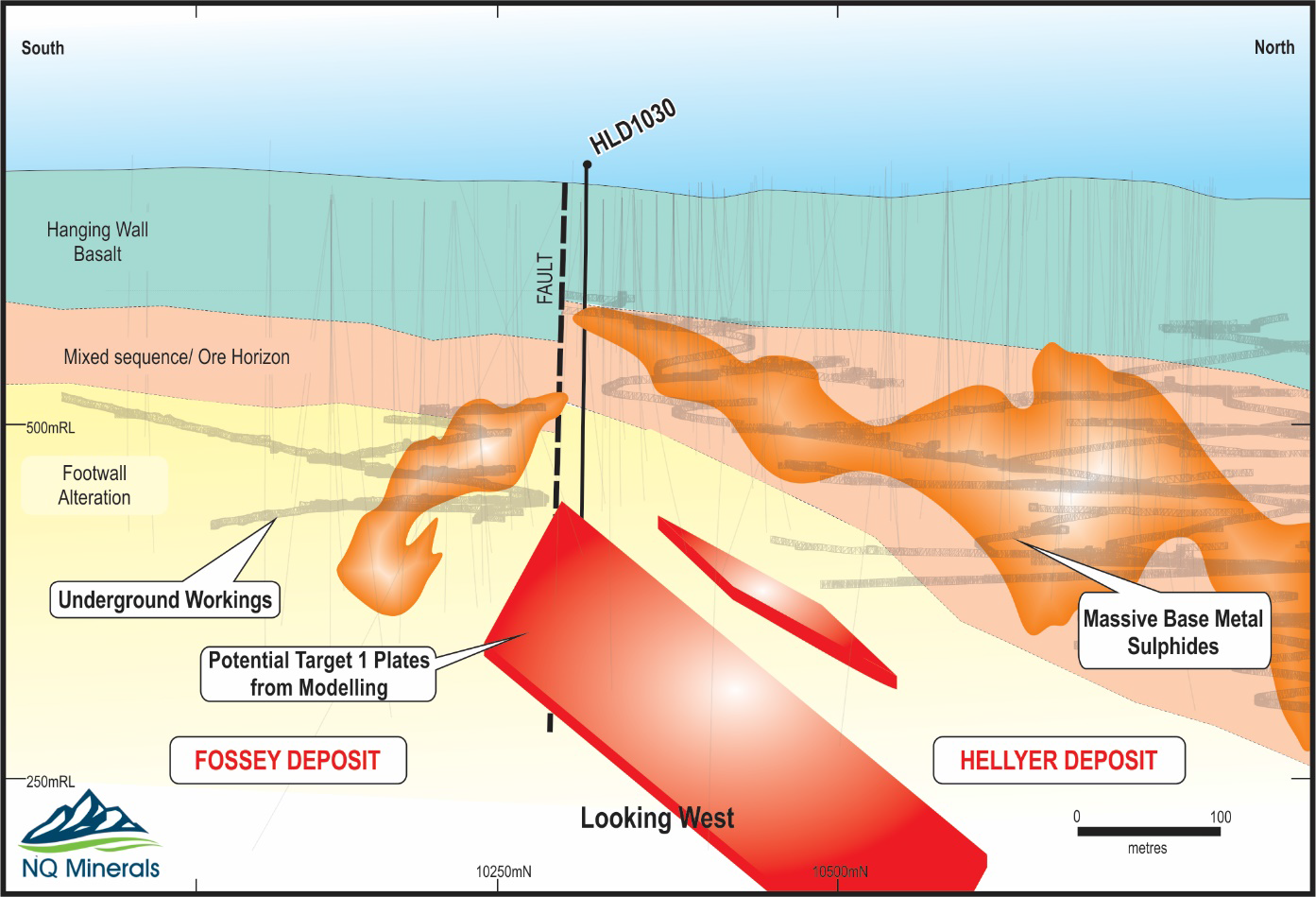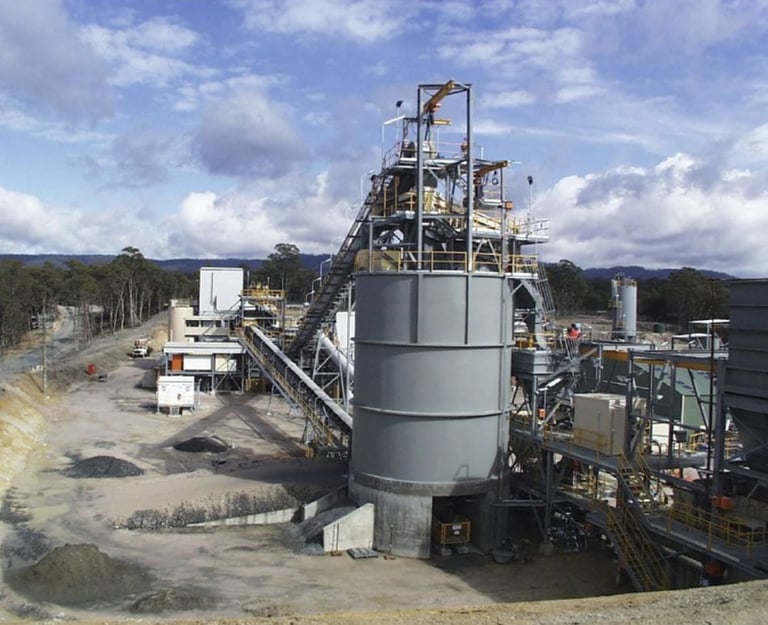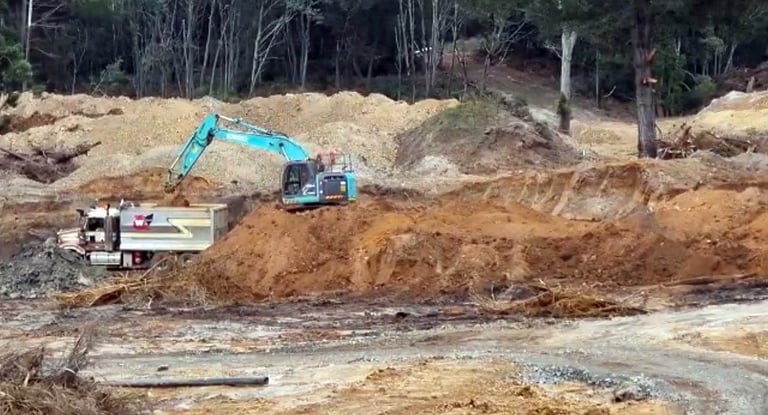NQ Minerals plc (AQSE:NQMI, OTCQB:NQMLF, US ADR OTCQB:NQMIY) has announced that it plans to break a 10-year hiatus in exploration work at its highly prospective Hellyer Project, located in the Mt Read Volcanic Belt; a geological terrain in NW Tasmanian renowned for large scale and high-grade polymetallic (copper-lead-zinc-silver-gold) deposits.
The Hellyer deposit was a large scale, rich high-grade lead-zinc mine. Past production under Aberfoyle (1986 – 2000) totalled 16.5 million tonnes at 13.9% zinc, 7.2% lead, 0.4% copper, 167 g/t silver and 2.5 g/t gold and under Bass Metals (2010-2012) totalled 0.5 million tonnes at 7.8% zinc, 4.2% lead, 0.3% copper, 101 g/t silver and 1.7 g/t gold from the Fossey Mine. There has been no exploration work undertaken on the Hellyer Mine Lease since underground mining operations ceased in mid-2012.
NQ is currently producing lead and zinc concentrates (with significant gold and silver credits) by reclaiming the Hellyer Mine tailings generated from the former mining operations and processing through the Hellyer concentrator plant at the rate of over 1.2 million tonnes per annum.
Since acquiring the exclusive rights to the underground resources at Hellyer from Bass Metals Ltd on 7 January 2020, NQ has commenced interrogating a high-quality data set acquired from Bass. It is clear that work essentially ceased ‘mid-stream’ in early 2012 and left several significant ‘open’ targets’ at a time when Bass was at the cusp of gaining a greater understanding of the key ore-deposit indicators. This follows their discovery of the Fossey deposit only 150 metres south of the large-scale Hellyer deposit, but in the footwall zone, below the classic ‘Hellyer ore position’, where the majority of exploration was targeted for the previous 30 years.
Ten years later, with the benefit of significantly more advanced exploration tools, specifically more powerful geophysical techniques, NQ has commenced a systematic review of these targets, focused initially on ‘prioirty-1’ areas, namely in close proximity to the known deposits and existing mine infrastructure.
NQ Minerals Executive Chairman, Mr David Lenigas, said;
“There is now significant potential to define new and extensive high-grade mineralisation at Hellyer, one of the world’s great polymetallic high-grade mines. We are operating in one of the mostly highly mineralised geological terrains in the world and we have a golden opportunity to continue Bass’s work from 2012 to build-up the existing significant underground resource inventory and extend the Hellyer mine life to underpin this operation for a very long time. The tailings reprocessing Phase 1, now running at over 1.2 million tonnes per year, has another 8 years to run with its current lead/zinc strategy and will generate significant cash flow for the Company, but it’s a finite resource. Stage 2 of the current operations will focus on recovering the significant gold and silver inventory in the tailings, but metallurgical test work continues with respect to this next phase of tailings reprocessing. To move Hellyer back into underground mining is a logical and natural progression, especially considering we have the Hellyer plant fully operational.”
Mineralisation on the Hellyer Mine Lease comprises massive base metal sulphide lenses within the core of a broadly folded volcanic-sedimentary sequence which plunges to the north-northeast. As the mineralisation generally does not outcrop, geophysics has played a vital part in mineral discoveries in the Hellyer region and down-hole electromagnetics (DHEM) is a core technique. NQ has now completed a first pass review of historical DHEM data for 8 surveyed drill holes in the priority-1 area. Remodelling work of the DHEM undertaken by Southern Geoscience, with input from former Hellyer geologists, has highlighted the significant enhancement in modelling software, and has identified four high priority targets/zones (Target 1 to 3B), which warrant follow-up exploration work, as presented in Figure 1, and represent significant potential for further base metals discoveries.
Note: Figure 1: Modelled DHEM Target Locations and Schematic Geology – Hellyer Mine Lease can be viewed in the appended PDF accessible from the link at the bottom of this announcement and in the news release version available on the Company’s website, nqminerals.com.
Geophysical Modelling Outcomes
The four high priority target zones to be followed up were identified in areas of known mineralisation and or significant alteration near the prospective ‘ore-forming’ stratigraphic horizon adjacent to the Hellyer underground mine envelope.
The modelled targets comprise ‘plates’ representing modelled conductive bodies, potentially massive base metal sulphide lenses. Due to constraints imposed by the data from historical surveys, the modelled plates are not well ‘constrained’ in terms of 3-D spatial co-ordinates, which is essential for efficient follow up drill testing. A number of potential model scenarios are presented, and spatial/geometry variance is currently high without further modern, high powered DHEM surveying efforts and re-modelling.
The following notes provide a summary overview of the high priority targets modelled:
· Target 1 – is associated with an extensive zone of alteration which hosts the McKay Prospect discovered in July 2011 – 7 metres at 22.3% Zn, 9.9% Pb, 0.7% Cu, 181 g/t Ag and 3.4 g/t Au. This intercept was in HLD 1030, which is the drill hole utilised for the DHEM which generated the modelled target-plates illustrated in Figure 2, as well as an ‘in-hole’ conductor representing the mineralisation intersected. Follow-up drilling at the time around this intercept failed to significantly extend this very high-grade massive base metal sulphide lens but did extend the zone of prospective alteration. The modelled plates, within the extensive alteration zone, highlight the potential for a significant mineralised body associated with this McKay zone mineralisation (refer Figure 2).
· Target 2 is a high priority target located immediately southwest of the Hellyer deposit. The modelled plates based on DHEM survey of HLD975, occur within prospective stratigraphy with anomalous geochemistry and strong alteration – in close proximity to both the Fossey and Hellyer mine development (Refer Figure 3).
· Targets 3A and 3B both occur within the historical Switchback Prospect where a large-scale alteration system and several mineralised intercepts were recorded. This area has also yielded highly encouraging trace element and isotope data indicating the presence of volcanogenic massive sulphide (VMS) mineralisation. Due to structural complexities, the original source for high-grade VMS clasts intersected previously such as in HED012 (4.85 metres at 1.6% Zn, 1.2% Pb, 18 g/t Ag and 0.9 g/t Au) has never been found; if preserved this represents an exciting base metal sulphide target.
· Targets 4 is a lower priority target zone occurring in the interpreted hanging wall to the main Hellyer ‘ore-position’ at depth to the north of the Hellyer deposit.
· Target 5 is also a lower priority target to the north of Hellyer – requiring additional interpretive work prior to any further assessment of this deep target zone.
Note: Figure 2: Schematic Long section – Looking West with Modelled Target 1 Plates Illustrated can be viewed in the appended PDF accessible from the link at the bottom of this announcement and in the news release version available on the Company’s website, nqminerals.com.
Note: Figure 3: Schematic Long section – Looking East with Modelled Target 2 Plates Illustrated can be viewed in the appended PDF accessible from the link at the bottom of this announcement and in the news release version available on the Company’s website, nqminerals.com.
Next Steps
NQ is planning a major program to assess these preliminary modelled targets which is planned to include:
· Assessing the condition of each of the DHEM surveyed drill holes and possibly neighbouring holes to be able to re-enter and case with PVC to the required depth. The PVC casing is necessary to protect the DHEM probe which is lowered into the drill hole and costs c.$100,000 to replace if the hole collapses and it cannot be recovered.
· As required, clear the drill hole utilising a small drill rig and case with PVC pipe.
· Resurvey and clear lines at surface to enable wire loop arrays (several kilometres in length) to be laid out on the ground as part of the new DHEM survey – for each target zone.
· Mobilise geophysical contractor to Hellyer to undertake the DHEM surveys.
There have been significant enhancements to DHEM equipment since the last DHEM surveys were run at Hellyer approximately 10 years ago. This creates a new and very exciting opportunity for NQ to leverage off major technical advances to better resolve spatially any potential targets and execute better targeted follow-up drilling if warranted. This includes:
· Utilising much higher electrical power/current inputs to penetrate far deeper into the ground to detect any conductive bodies at greater distances from exploration drill holes;
· Optimised Electro-Magnetic (“EM”) loop arrays to get better 3-D resolution of any conductive units identified – through varied coupling scenarios;
· Access to significantly enhanced modelling software to also resolve the position and dimensions of any modelled plates; and
· Working in the context of an updated geological target model which extends deeper below the traditional ‘ore-horizon’ such as hosts the new Fossey and McKay discoveries.
NQ plans to undertake this work program on site in the Australian Spring, possibly commencing October-November 2020, depending on rig and crew availability.
These technological advantages coupled with the important geological advances achieved by Bass, pre 2012, makes for a compelling exploration opportunity. There are further targets to follow-up, but those targets discussed were selected due to their proximity to existing mining and processing infrastructure leading to rapid development should they be proved up. Insights gained from these first four targets will be applied to other currently lower priority targets.
Figures 1, 2 and 3 in this announcement may be accessed on the appended PDF available at:
NQ Minerals Plc is listed on London’s Aquis Stock Exchange (AQSE) under the ticker NQMI and has it’s 1:100 ADR traded on the US OTC QB under ticker NQMIY and its ordinary shares are dual traded on the US OTC QB under the ticker NQMLF.










































